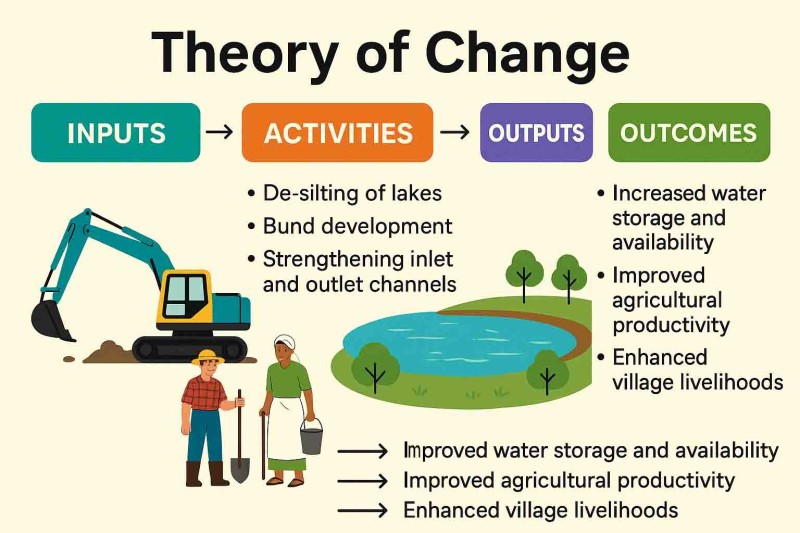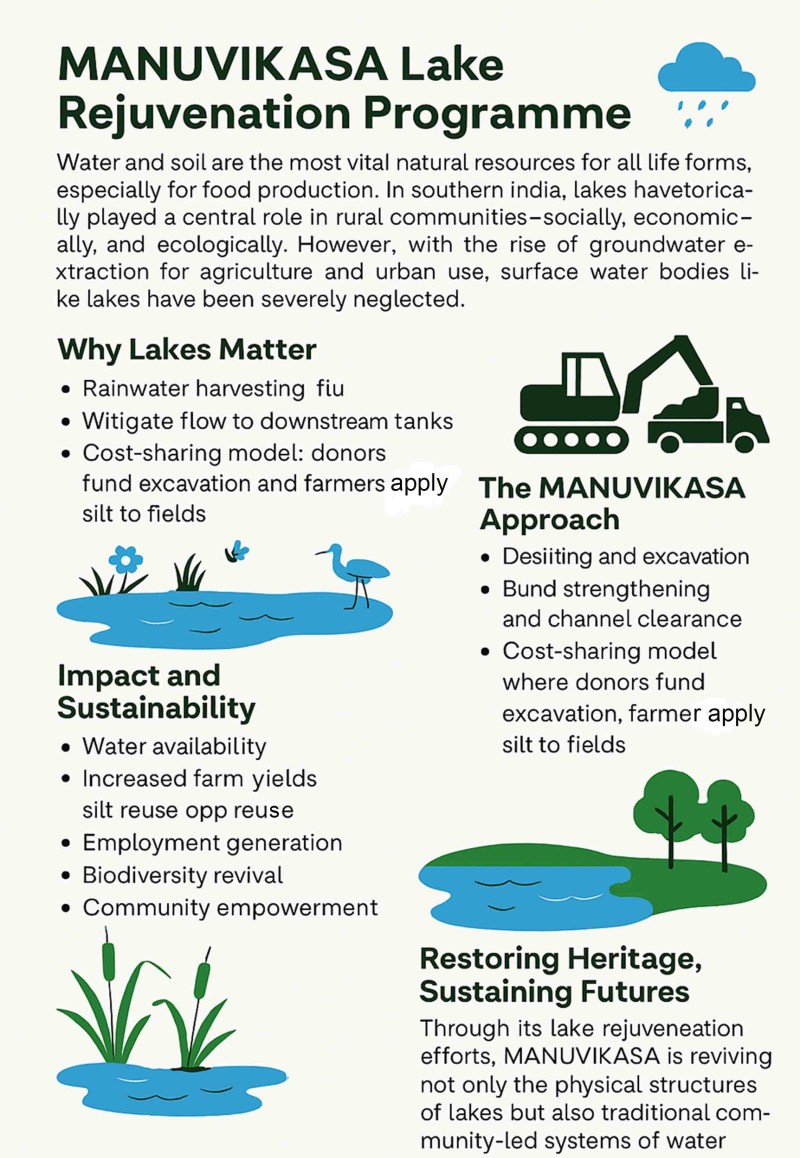LAKES DEVELOPMENT
- HOME
- LAKES DEVELOPMENT
Reviving Our Lakes: The MANUVIKASA Lake Rejuvenation Programme
Water and soil are the most vital natural resources for all life forms, especially for food production. In southern India, lakes have historically played a central role in rural communities—socially, economically, and ecologically. However, with the rise of groundwater extraction for agriculture and urban use, surface water bodies like lakes have been severely neglected.
Today, we face a national crisis of water scarcity. Depleting groundwater levels and failed borewells are becoming the norm in many regions. The urgency to restore surface water sources and recharge groundwater is greater than ever. Across the country, government policies, corporate CSR initiatives, and development programs are trying to address this challenge. MANUVIKASA is proud to be part of this movement through our comprehensive Lake Rejuvenation Programme.
Why Lakes Matter
Community lakes are a critical part of traditional rainwater harvesting systems, designed by our ancestors through deep indigenous knowledge. These lakes capture rainwater runoff and channel it into downstream tanks and aquifers. Unfortunately, technological advances—particularly in borewell and tubewell drilling—have led to overextraction of groundwater and widespread neglect of these essential water bodies. Many lakes have been encroached upon, feeder channels diverted, and catchment areas degraded. As a result, most community lakes are now heavily silted and hold little water.
The consequences are visible: failed borewells, reduced crop yields, rising irrigation costs, and ecological degradation. But a growing number of farmers now recognize the importance of surface water and are rallying for the rejuvenation of these lakes.
The MANUVIKASA Approach
MANUVIKASA works closely with communities to restore lakes by:
- Desilting and Excavation: Removing accumulated silt to restore original depth and capacity.
- Bund and Inlet/Outlet Strengthening: Ensuring proper water flow and structural stability.
- Cost-Sharing Model: We follow a unique 30:70 partnership model where Farmers share 70%.
- Philanthropic and CSR partners fund the excavation.
- Farmers transport and apply the nutrient-rich silt to their farmlands at their own cost.
This approach fosters local ownership and long-term protection of the lake. The rejuvenated lakes are then managed by user groups, often in coordination with Gram Panchayats, ensuring continued upkeep and equitable water distribution.
Impact and Sustainability
- Water Availability: Rejuvenated lakes recharge groundwater and provide surface water for farming and household use.
- Increased Farm Yields: Silt applied to fields improves soil fertility, moisture retention, and crop output—acting as an organic manure rich in carbon and nutrients.
- Employment Generation: We engage local communities and laborers under MGNREGA for maintenance and restoration activities.
- Biodiversity Revival: Protected lakes become habitats for birds, insects, reptiles, and aquatic life, contributing to ecological balance and natural pest control.
- Community Empowerment: The program builds capacities among local users to sustainably manage lakes and wetlands, introducing livelihood activities like fisheries.
Restoring Heritage, Sustaining Futures
Through its lake rejuvenation efforts, MANUVIKASA is reviving not only the physical structures of lakes but also the traditional community-led systems of water management. These lakes once supported biodiversity, livelihoods, and food systems—and with our collective effort, they are returning to their former glory.
We believe restoring lakes is not just an environmental activity—it is a step toward ensuring water security, agricultural resilience, and community well-being for generations to come.
Potential long-term ecological benefits from lake rejuvenation are:
- Increased storage capacity and increased quantities of water available for irrigation
- Increased groundwater recharge and groundwater availability.
- Improved soil moisture regime and hence, better productivity.
- Improvement in quantity and quality of drinking water.
- Increased availability of water for livestock.
- Increase in the tree cover and clean environment.
- Positive impact on biodiversity and soil biota.
Potential long term economic benefits from lake rejuvenation are:
- Improved production and higher family income and improved quality of life.
- Equitable distribution of water for command farmers.
- Increased opportunity for gainful employment.
- Reduction in the risk of crop failure.
- Improved nourishment (through fisheries development);
- Improved interaction among different communities.
- Improved livestock and milk production
MANUVIKASA’s Lake Rejuvenation and Livelihood Development Strategy
MANUVIKASA has effectively implemented a wide range of programs in livelihood promotion, agriculture development, water harvesting, and financial inclusion across Karnataka. The organization’s approach is deeply rooted in community participation, ensuring that local people are actively involved in planning, execution, and monitoring. Over time, this participatory approach has created a strong sense of ownership, prompting many individuals and communities to engage more deeply with MANUVIKASA's initiatives.
A key feature of our model is the emphasis on cost-sharing with beneficiaries and co-financing by donor partners. This not only makes the intervention financially viable but also ensures long-term sustainability by fostering a shared sense of responsibility. Transparency, openness to partnerships, a bottom-up planning approach, and frequent quality assessments are the pillars of our implementation strategy. All programs are designed with a strong focus on measurable scale and impact, and incorporate scientific tools such as water and soil quality testing.
Before commencing interventions in a new area, MANUVIKASA undertakes a comprehensive need assessment. This includes analysis of secondary data, discussions with small and marginal farmers, Gram Panchayat officials, PDOs, local leaders, and taluk-level authorities. We also collaborate with academic institutions and resource persons to study the soil profile, rainfall patterns, flood and drought history, lake condition, cropping systems, and other critical ecological parameters. These inputs help us understand the engineering and sustainability aspects of the lakes, ensuring that rejuvenation efforts are effective and context-specific.
We follow a Build–Transfer–Manage model for lake rejuvenation. In this model, the lake is physically restored through excavation and bund strengthening, then responsibility is transferred to a Lake Users’ Group (Kere Balakedarara Sangha) composed of local stakeholders. These groups are trained to manage the lake equitably, ensuring even the smallest and most vulnerable farmers have access to water. Long-term maintenance is handled through these institutions with support from Gram Panchayats.
Our implementation strategy is guided by four strategic elements: clarity of intended impact, prioritization of activities for maximum outcomes, identification of necessary financial and human resources, and definition of performance metrics to monitor progress. Information on programme objectives and achievements is widely disseminated through brochures, social media, and local meetings to increase awareness, promote transparency, and encourage replication.
MANUVIKASA begins lake rejuvenation work by holding meetings with the local community to clear encroachments and plan development activities. We obtain no-objection certificates from Gram Panchayats or relevant departments when necessary. In large and medium lake rejuvenation projects, farmers contribute by transporting excavated silt to their fields at their own cost—often making up over 60% of the total cost. For farm pond development, the cost is shared equally between the beneficiary and the organization.
The silt removed from lakebeds is rich in nutrients and organic matter, acting as a natural fertilizer. When this silt is not suitable for farmland, MANUVIKASA responsibly disposes of it nearby or uses it to strengthen bunds. Excavation is carried out with appropriate machinery, depending on transport availability. The work is monitored by civil engineers who measure excavation volumes and verify quality. Site selection for lake rejuvenation includes consideration of watershed area, inflow/outflow channels, bund condition, water spread, agricultural impact, and extent of encroachment.
In addition to water conservation, we offer training to women on financial literacy and sustainable agriculture. The Managing Trustee oversees all operations, supported by a team of accountants, field supervisors, and a dedicated MIS officer. The accountant monitors budgets, ensures compliance, and manages vendor payments, while the MIS officer tracks field data, evaluates work quality, and reports progress to the Director.
The Director conducts regular reviews and facilitates team planning sessions. Project coordinators, who are experienced field staff, support supervisors and ensure training and field implementation run smoothly. Staff members are responsible for village selection, community mobilization, stakeholder engagement, arranging logistics, data collection, and documenting success stories. Post-implementation, staff continue to support villages for up to two years to ensure sustainable lake management.
After rejuvenation, we coordinate with temple committees, Gram Panchayats, and Lake User Groups to establish a maintenance plan. Gram Panchayats may permit fishery activities in the lake, with revenues used for maintenance such as bund repair and weed control. Forest Departments supply saplings for plantation along lake bunds—typically shrubs rather than large trees to prevent structural damage. We actively seek convergence with MGNREGA and other government schemes for post-programme maintenance activities like stone pitching and desilting.
We plant around 100 saplings per lake, contributing to ecological restoration, climate resilience, and biodiversity enhancement. This green cover also improves the aesthetic value and microclimate of the area. Our experience shows that around 43% of farm pond beneficiaries are small farmers (less than 2 acres), 53% are medium farmers (2–5 acres), and 6% are large farmers. For lake rejuvenation, 35% of beneficiaries are small farmers, 53% are marginal farmers, and 12% are large landholders.
To date, MANUVIKASA has rejuvenated 314 lakes, creating an annual water harvesting capacity of 2,693 million liters. These efforts have directly supported 9,624 farmers and irrigated 36,251 acres of land. Follow-up studies conducted years after completion indicate that 93% of rejuvenated lakes remain in good condition. Our work has not only improved agricultural productivity—especially through a shift from field crops to horticulture—but also restored ecosystems, revived community traditions of water stewardship, and strengthened local livelihoods.
Following chart shows the lake water use for different crops
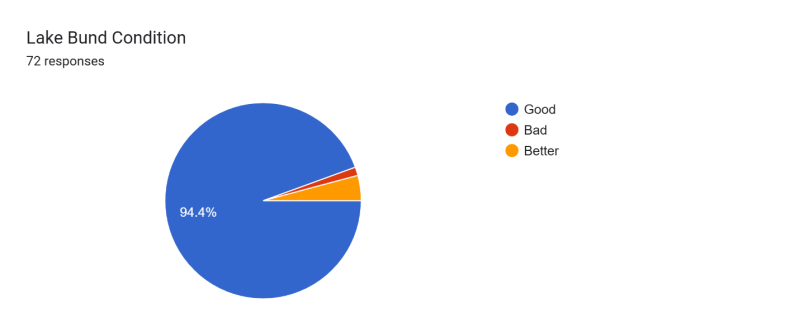
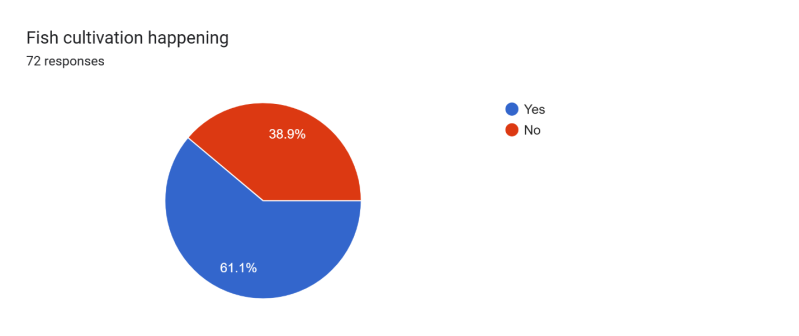
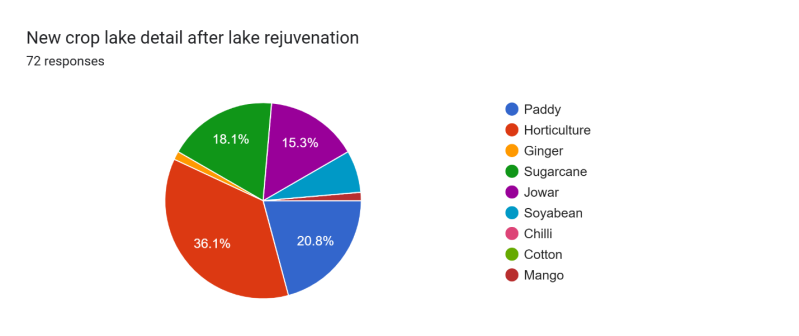
Most of the rejuvenated lakes farmers are rearing fish and using the income earned by this activities will be used for following causes

We tested the soil of lakes and 100% of the lakes which is rejuvenated by us are suitable for agriculture use as per laboratory report.
